Flexible Circuits
Engineered Solutions » Flex & Rigid/Flex Solutions » Flexible Circuits
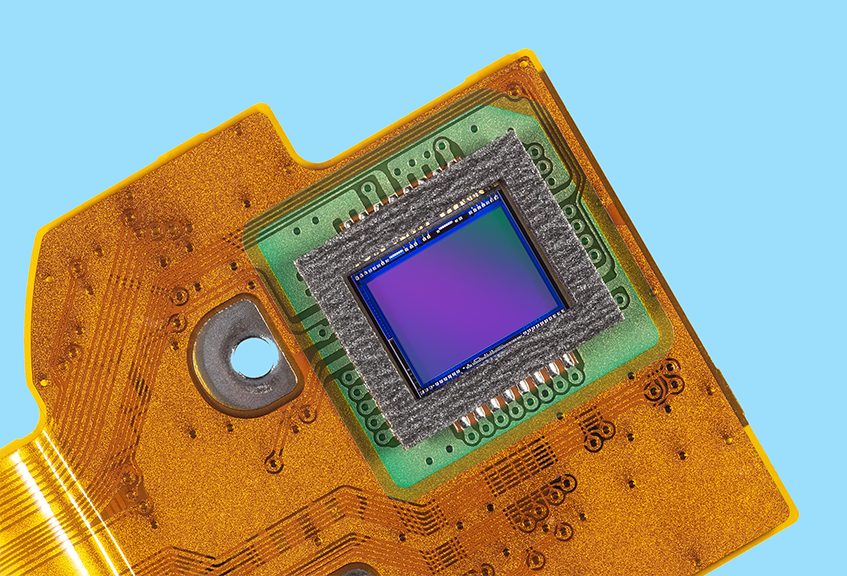
- Flex Circuit Constructions
Flexible printed circuits offer several advantages over discreet wire harnessing, which are beneficial in many applications. Features such as weight savings, package size reduction, and increased circuit density are preferred for applications that require compact, lightweight components. Other benefits include manufacturing repeatability and reliability, thermal control, unmatched design freedom, and the choice of a preferred connector option. From surface mount connectors to through-hole and connector-less options like ZIF (zero insertion force) interfaces, the number of interconnect combinations are endless. As technology continuously evolves smaller, faster, and more complex, flexible circuits allow customers to meet these increasing demands.
Single Sided Flexible Circuits (IPC Type 1)
Single sided flexible circuits have one conductive layer that can be bonded to a base dielectric with or without an adhesive. Copper weights range from 1/4oz to 7oz. Pads for single sided circuits are accessible from one side of the circuit. Holes may be added to the circuit; however, they may not be plated through. Single sided circuits are thin and well-suited for dynamically bending applications.
Double sided Flexible Circuits (IPC Type 2)
Double-sided flexible circuits have two conductive layers separated by a layer of dielectric. Copper weight ranges from 1/4oz to 4oz and through holes can be drilled and plated to provide continuity between the layers. In addition, conductors can be designed for controlled impedance using the opposite side as a reference plane.
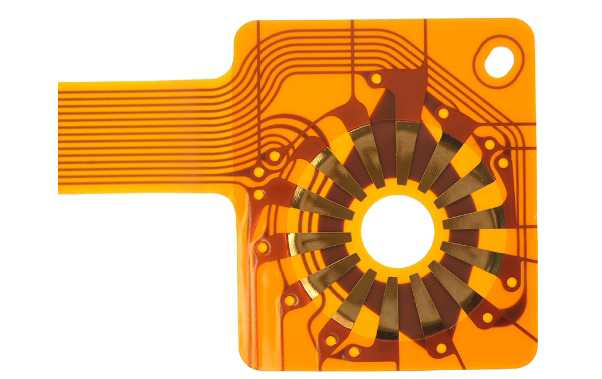
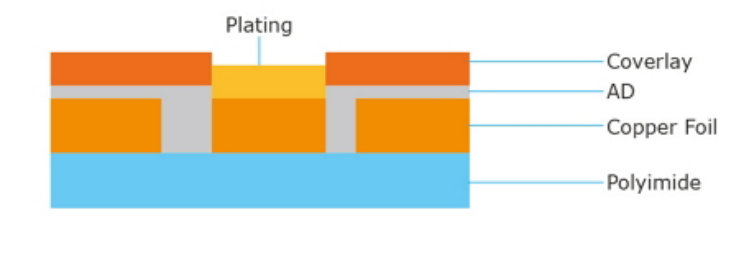

Back-Bared Flexible Circuits (IPC Type 1)
Back-bared circuits allow for access from both the top and bottom side of the circuit but only has one conductive layer. This allows for great flexibility and eliminates the need for plated through holes.
Selectively Bonded Flexible Circuits (IPC Type 2 Hybrid)
For dynamically bending applications that require multiple layers, selectively bonded flexible circuits are a smart option. Even though the layers are independent of one another, plated vias can be added to bonded areas for continuity between layers. Selectively bonded circuits allow for maximum flexibility and a multitude of connector options.
Multilayer Flexible Circuits (IPC Type 3)
For circuits that require complex trace routing, impedance control, shielding between layers, or high current carrying, multilayer flexible circuits are the right choice. Vias can be drilled and plated through all layers, or blind and buried vias can be drilled and plated to provide continuity between specially targeted layers. However, the higher the layer count, the less flexible the circuit will be.
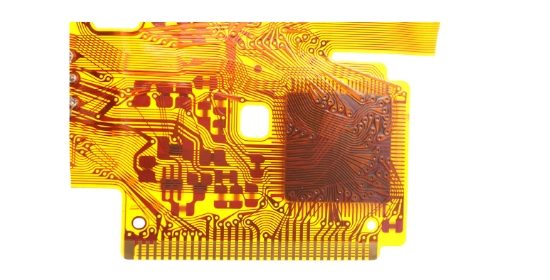
Multilayer Rigid/Flex (IPC Type 4)
Rigid-flex circuits are different from traditional printed circuit boards (PCBs) in that they combine both rigid and flexible materials into a single integrated circuit. Rigid-flex circuits offer several advantages over traditional PCBs for applications that require:
- Resistance to vibration and shock
- Design customization
- Tight space configurations
- High reliability
- Light weight
Offering greater flexibility of component placement and layout without the weight and bulk of connectors, rigid-flex circuits provide the combined functionality of both rigid circuit boards and flex circuits with less mass and smaller size. They can be bent and curved to fit into areas that rigid boards cannot, and can also reduce product assembly time, saving overall costs. Rigid-flex circuits are ideal for applications with vibration and harsh environmental conditions, where reliability is critical.
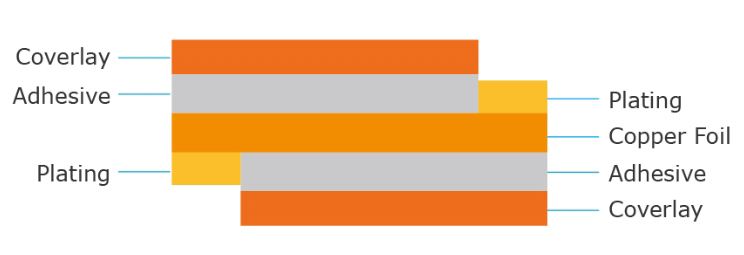
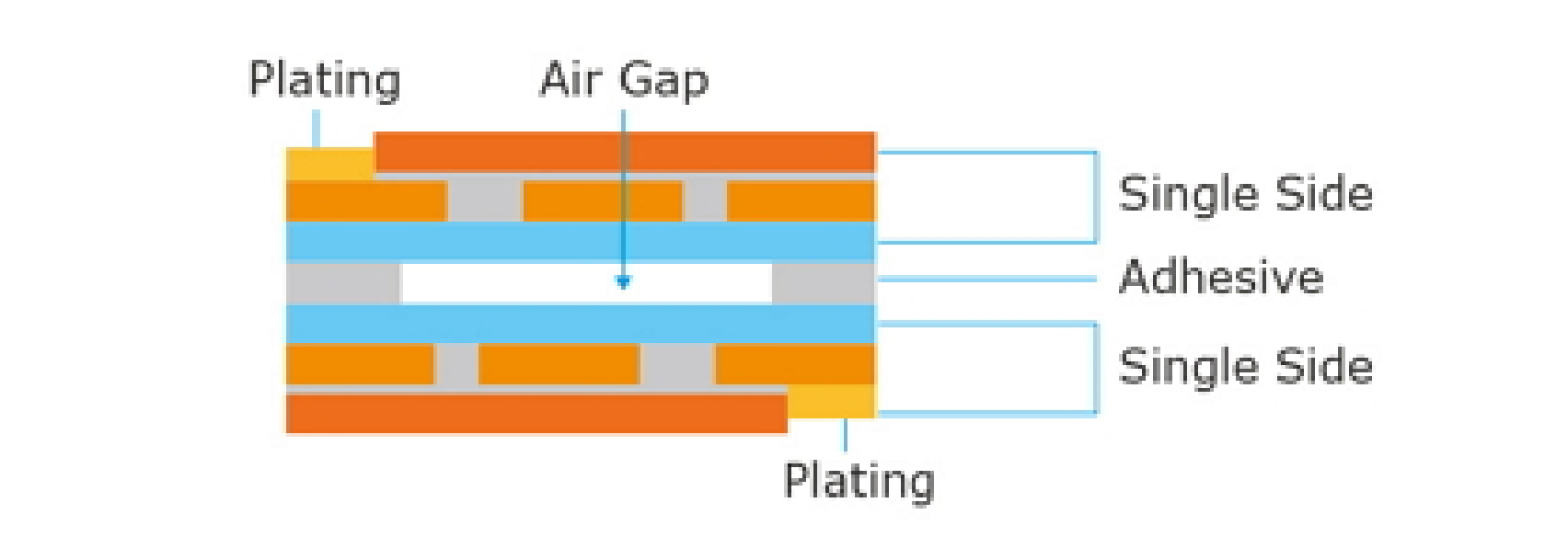
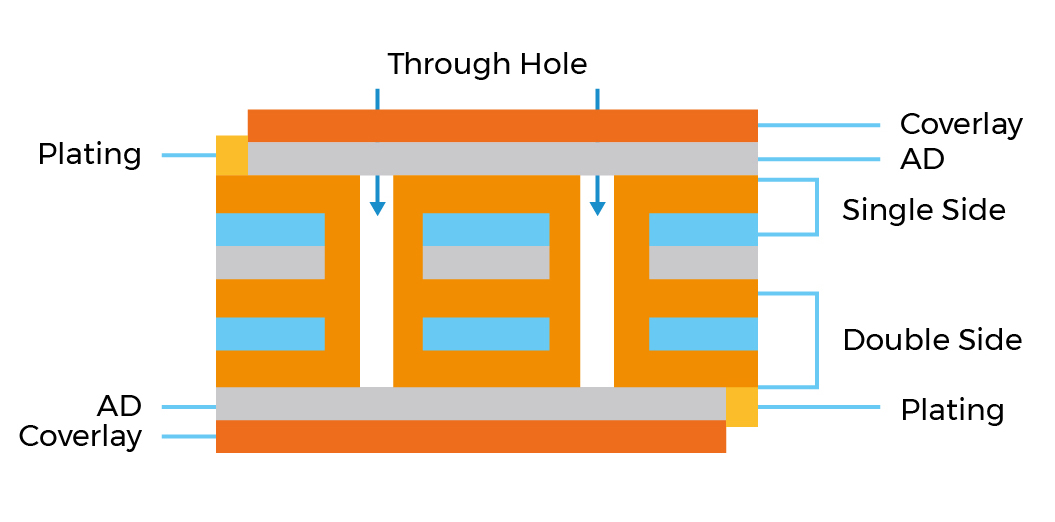
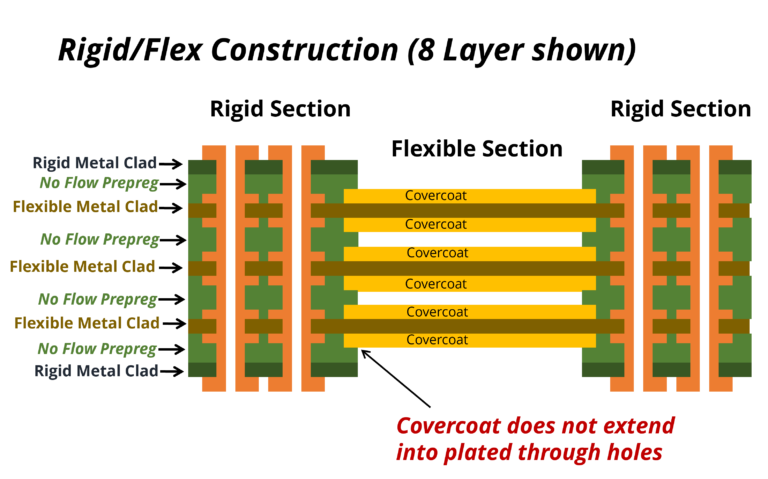
Rigid/flex is the marrying of rigid and flexible materials with plated through holes through the rigid section.
Similar features to multilayer flex except with added advantages:
- Rigidized flat surfaces for component mounting
- Robust plated through holes
- Structural strength for chassis mounting
- Supports higher layer counts
Download/View Literature

